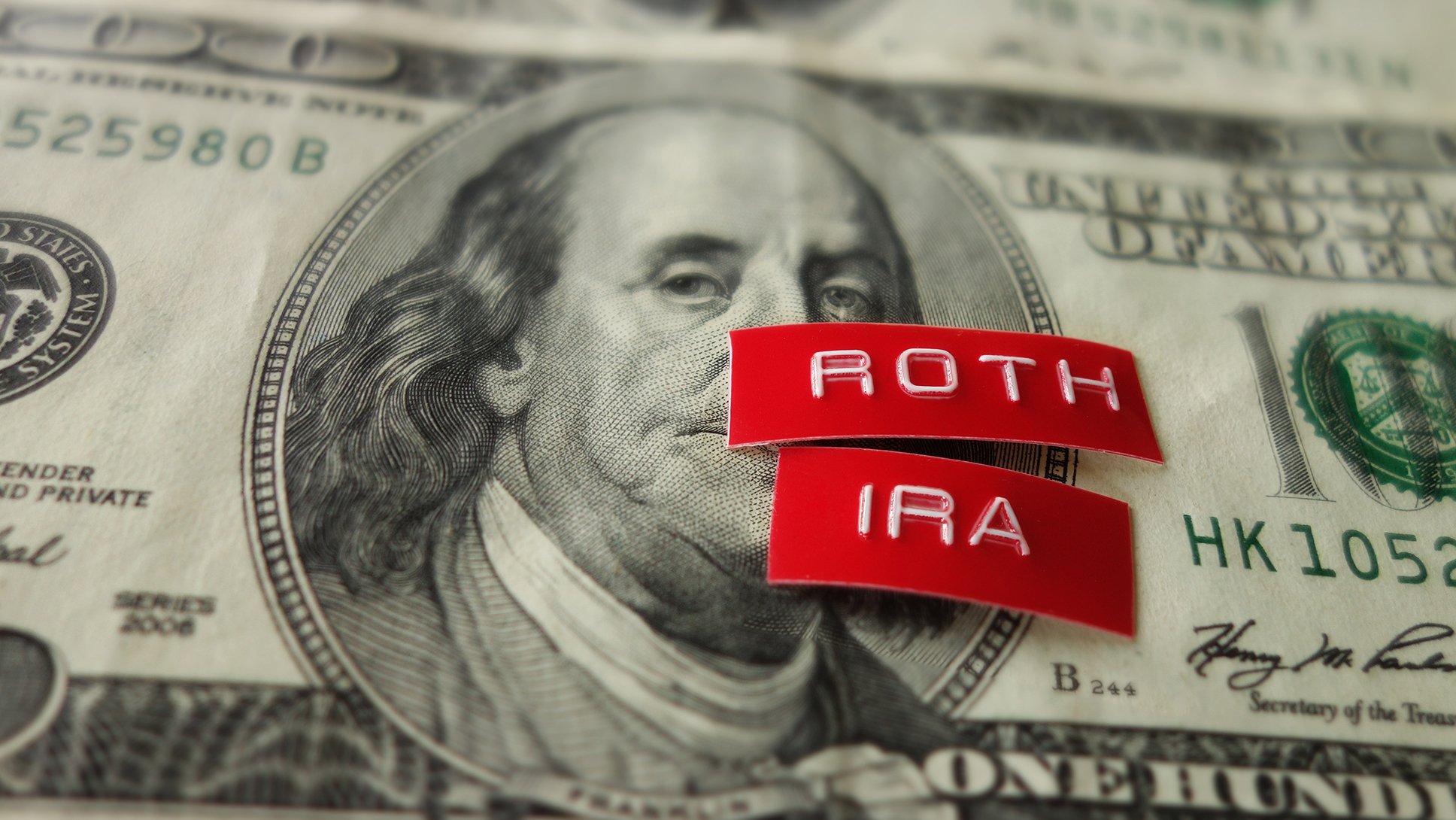
David J. Kupstas, FSA, EA, MSEA Chief Actuary
Lately, several people have asked me about a “mega backdoor Roth IRA.” I didn’t really know what this was, but anything with “backdoor” in the name is something I want to explore. It sounds a little devious. Maybe I could finally be a bad boy – more so than when I rip tags off mattresses or go through the express line with 12 items instead of 10. It might be a tax-saving trick the government DOESN’T WANT YOU TO KNOW ABOUT. And these aren’t just backdoor Roth IRAs, they are MEGA backdoor Roth IRAs. Whoa!
What is a mega backdoor Roth IRA? Is it legal? And is it even worth pursuing? Let’s find out.
Roth IRA Basics
Before we can answer what a mega backdoor Roth IRA is, we should remind everyone what a Roth IRA is. With a traditional IRA (not a Roth), a worker makes a contribution which can be deducted on that year’s tax return. The tax is paid on the contributions and earnings when the money is ultimately withdrawn.
Under a Roth IRA, named for the late Senator William V. Roth (R-DE), contributions are not deducted when made. However, if certain conditions are met, the eventual withdrawals are not taxed. Roth IRAs may appeal to workers who think their marginal tax rate will be higher when withdrawals are made later vs. now when contributions are made. Think young workers looking to move up the pay scale as their careers progress or high earners who think all tax rates will be higher in the future to pay off the national debt or because of a general restructuring of the tax system. Of course, no one knows what their tax rates will be in the future. It’s all a big bet. As a hedge, workers might want to contribute to both Roth and non-Roth IRAs.
Eventually, the Roth concept was extended to 401(k) plans. Depending on what the plan allows, a participant may make salary deferrals that are Roth, non-Roth, or a combination of the two.
A Back Door for Those Restricted Under Roth Rules
What about this “mega backdoor” Roth IRA? Why would someone consider that? Maybe because for high earners the regular Roth limits are not high enough:
-
- The most a worker may contribute to an IRA is $6,000 per year. For someone age 50 or older, the limit is $7,000. (All limits discussed herein are for 2021.)
- High earners are unable to contribute to Roth IRAs at all. The ability to contribute to a Roth IRA phases out for single filers with modified adjusted gross income of $125,000 and married filers filing jointly with modified AGI of $198,000.
- The salary deferral limit in a 401(k) is $19,500. For employees age 50+, the limit is $26,000.
So depending on your income and age, the maximum Roth-style contributions you can make to any kind of plan might be $6,000 or $7,000, it might be $0, or it might be $19,500 or $26,000. Meanwhile, the annual addition limit in a 401(k) plan is $58,000, or $64,500 with catch-up contributions. What if someone wants to contribute that much and have it be all Roth? They can’t do it, can they? Most or all of it has to be non-Roth, with a current deduction but a taxable distribution later.
Ah, here’s where the mega backdoor Roth IRA comes in. How can we arrange one of these? To start with, you need a qualified retirement plan (not an IRA) that allows after-tax contributions, also known as voluntary contributions or employee contributions. The plan can be either a 401(k) plan or a profit sharing plan. If you do not have a qualified plan with an after-tax contribution feature, there cannot be a mega backdoor Roth IRA.
Maybe you’ve never heard of after-tax contributions. If so, you’re not alone. You almost never see them these days, at least we don’t in our practice. After-tax contributions are when an employee contributes his own money that has already been taxed. Nowadays, most contributions made by employees are in 401(k) plans and are pre-tax, meaning they reduce the employee’s taxable income. Do not confuse after-tax contributions with Roth contributions. Although Roth contributions technically are after-tax, we mean something different when we say after-tax contributions here.
ACP Test Will Halt This Strategy for Many
At this point, there is something very, very important to note. This is usually where most people figure out a mega backdoor Roth IRA will not be feasible for them. After-tax contributions are subject to the Actual Contribution Percentage (ACP) test. This is the same test used to determine whether matching contributions are discriminatory in favor of Highly Compensated Employees (HCEs). The ACP test is similar to the ADP test for salary deferrals.
The bottom line is this: if there are Non-Highly Compensated Employees (NHCEs) in the plan, the mega backdoor Roth IRA is probably not going to work. This is because it is usually HCEs who want to do a mega backdoor Roth IRA. To do so, the HCE will have to make after-tax contributions. To pass the ACP test, there will have to be some NHCEs making after-tax contributions. If no NHCE does make after-tax contributions, the HCE will not be able to either, and so there can be no mega backdoor Roth IRA.
This doesn’t mean that no one in the world can ever do a mega backdoor Roth IRA. If those wanting to make after-tax contributions are NHCEs, if there is a sufficient mix of HCEs and NHCEs wanting to do it, or if the plan has matching contributions with an ACP test that passes convincingly, then the idea could work. Or, as we are most likely to see in our practice, if the plan has only HCEs, then a mega backdoor Roth IRA could be possible. The ACP test will automatically pass if there are no NHCEs to test.
It has been suggested that there are some plans that (gasp!) don't run the ACP test when they're supposed to. If so, shame on them. While we say in the title that this strategy "rarely works," it will work just fine if you simply skip the required ACP test. At least it works fine for the employee. It may not work so well for those responsible for the plan if they get caught in an audit.
It is true that safe harbor 401(k) plans can be designed to be exempt from ACP testing. Unfortunately, that exemption applies only to matching contributions. A safe harbor plan cannot be used to get around the ACP test for after-tax contributions.
Mega Backdoor Roth IRA Mechanics
Assuming a plan is able to get over the ACP test hurdle, here is how the mega backdoor Roth IRA may be accomplished:
-
- Make after-tax contributions of the desired amount to the qualified plan. The annual addition limit for 2021 is $58,000. After-tax contributions are considered annual additions along with pre-tax deferrals, match, profit sharing, and other types of contributions. So the most one could contribute after-tax is the annual addition limit minus whatever types of pre-tax contributions are being made plus any pre-tax amounts that are catch-up contributions.
- If the qualified plan allows in-service distributions, roll the after-tax contributions over to a Roth IRA. The amount of after-tax contributions would not be taxable, of course, since tax was already paid on them. Any earnings on the after-tax contributions rolled over to the Roth IRA would be subject to tax. Therefore, it might be wise to roll the after-tax contributions to the Roth IRA soon after they are made to the qualified plan, before there is a chance for the contributions to receive much earnings.
- One might want to distribute only the after-tax contribution amounts and leave the earnings in the plan, but you can’t do that. If you make a distribution that includes after-tax contributions, the distribution has to be pro-rata between the pre-tax and after-tax amounts in the employee's account.
- You can, however, track the after-tax contributions and earnings separately from other types of contributions such as deferrals and matches. You could write your plan document so that in-service distributions may be made only from the after-tax source. This would enable distributions to be made that consisted primarily of after-tax dollars.
- If the qualified plan is a Roth 401(k), it might be possible to do an in-plan rollover from after-tax contribution to Roth contribution. In terms of giving money a Roth identity, the effect would be the same as rolling the money to a Roth IRA.
Taking all these steps and making after-tax contributions seems like a lot of work. Couldn’t the employee just make or receive regular pre-tax contributions each year in a qualified plan, take an in-service distribution and roll some of it to a Roth IRA, pay the necessary taxes, and effectively end up with a big Roth IRA contribution that way?
Well, yes, this could work in some situations. But if the employee wants to get as many dollars as possible into a Roth environment, after-tax contributions are the way to go. Assume an employee with a marginal tax rate of 33% rolls over $60,000 of pre-tax qualified plan dollars into a Roth IRA. About one-third of the $60,000, or $20,000, will be taxed away, leaving only $40,000 in the Roth IRA. However, by contributing $60,000 after-tax and then rolling it over, the $60,000 rollover from the qualified plan will result in $60,000 in the Roth IRA. The tax would already have been paid at whatever rate applied when the employee earned the income. Because the mega backdoor Roth IRA tends to be utilized by those with large appetites for tax-deferred savings, they will prefer contributing after-tax dollars so as to maximize what they can put into the Roth environment.
Making after-tax contributions to a qualified plan and then rolling those dollars to a Roth IRA can be an effective way of getting around the contribution and income limits associated with Roth IRAs and 401(k)s. Just know that the ACP test will prevent a lot of those wishing to employ this strategy from being able to do it.
This article is provided for general information purposes and may not be relied upon as tax advice. Anyone wishing to utilize a mega backdoor Roth IRA will wish to review the strategy with qualified tax counsel. There are rules about Roth IRAs and distributions thereto that were not addressed here.




